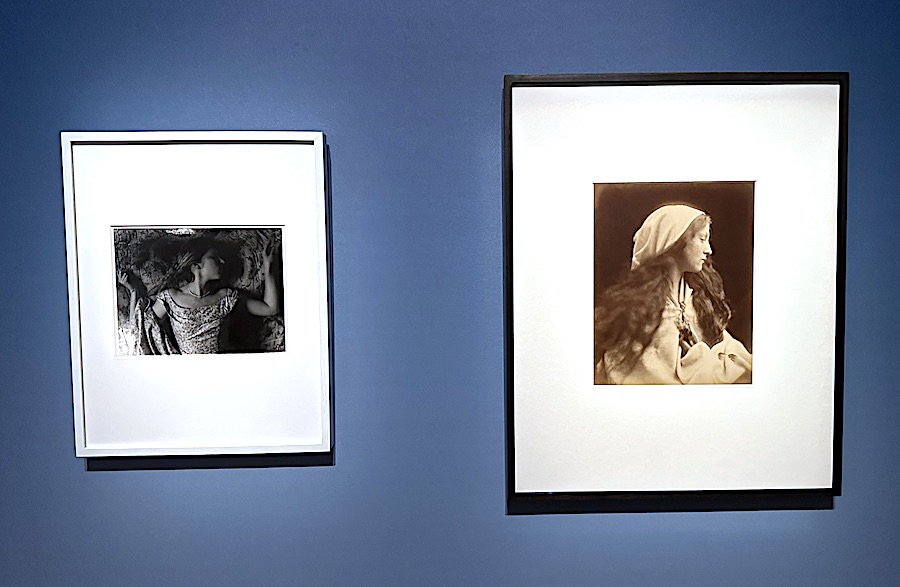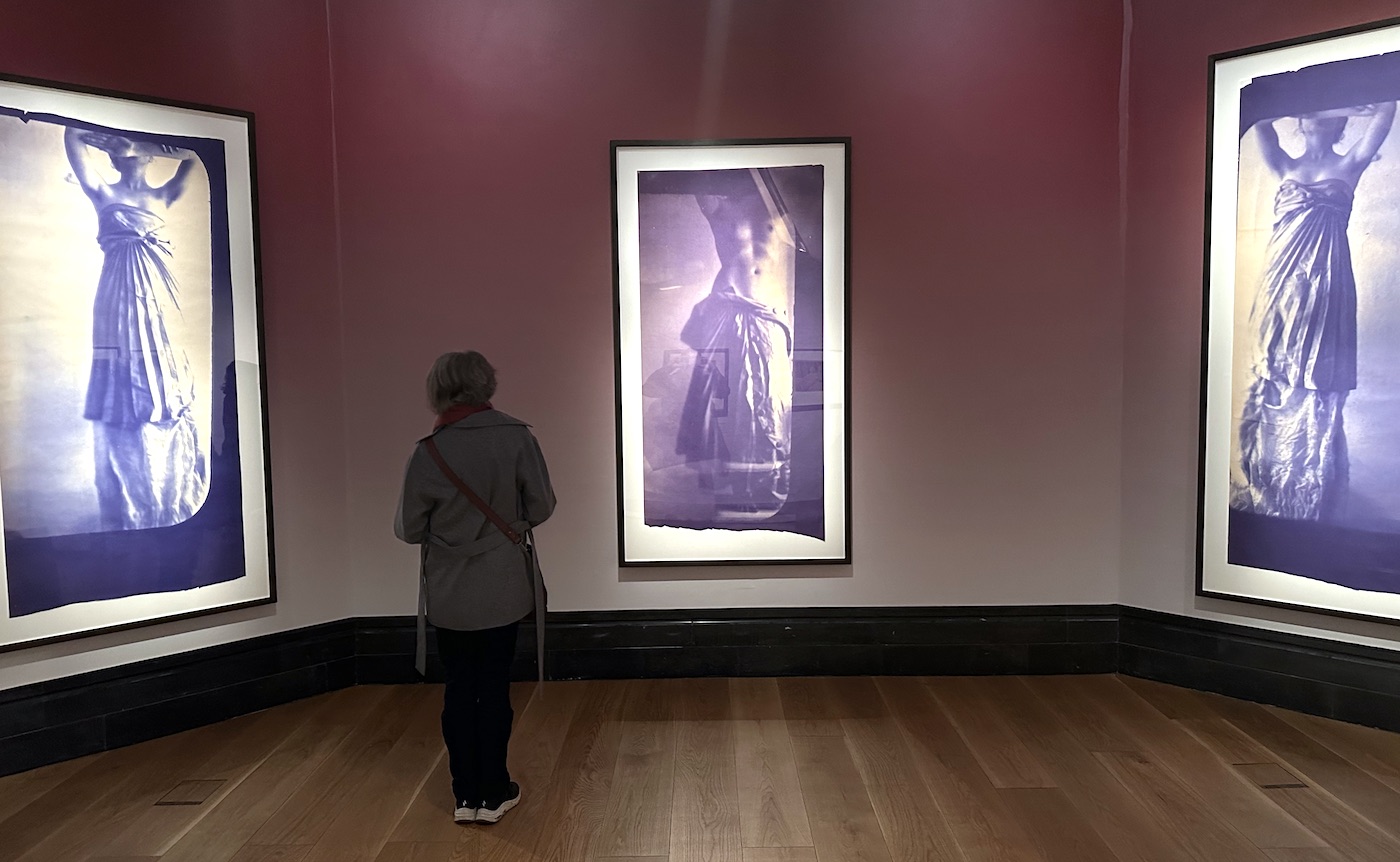As much seems to divide the photographers Juliet Margaret Cameron and Francesca Woodman as unites them. The former was a well-bred Victorian English woman from a privileged colonial background; the other American, born some hundred years later, lived through the height of feminist debates around women’s role in art and society. What unites them is their pioneering photographic work executed in short but highly productive periods. Each woman encompassed a singular female vision that used archetypes and myths to explore not only the worlds in which they lived but also something deeper and, on occasion, darker.
Cameron (1815-79) was self-taught. Using a wooden sliding camera box placed on a tripod, she made albumen prints employing the wet collodion method. She was given her first camera when she was 48, a gift from her daughter and son-in-law, so the bulk of her work was created within fifteen years. The medium of photography was still very new and largely dominated by men, pioneers such as Louis Daguerre and William Fox Talbot. Although the principle of the camera had been known from ancient times and artists from the Renaissance onwards had made use of the camera obscura, the chemistry needed to secure an actual image wasn’t available until the 19th century. From the daguerreotypes of the 1830s with their radically reduced exposure times to the development in the 1880s of George Eastman’s dry gelatine roll film, photographic techniques were continually being updated and improved even though photography was rarely dignified with the term ‘art’.
Woodman (1958-79) came from an arty family. Her mother was a ceramicist and her father a painter and photographer who gave her her first camera. She attended art school, displaying a precocious interest in photography when, at 13, whilst at boarding school, she produced her first self-portrait. Her body of work spans a mere nine years as, tragically, she took her own life at 22 (as did that other female photographer, Diane Arbus).
Victorian ideas collapsed women’s art into the realm of nature and the chthonic. According to Griselda Pollack’s Old Mistresses, women were “present as an image, but with the specific connotations of body and nature, that is passive, available, possessive, powerless.” To a degree, this exhibition shows the push/pull these two artists displayed towards and away from such essentialist ideas. Structured thematically under the headings of Picture Making, Nature and Femininity, Models and Muses, The Dream Space, Doubling, Angels and Other Worldly beings, we find both of them encapsulating and rejecting these tropes.

In various cultural histories, angels have been seen as able to move between spiritual and earthly realms, the conscious and the unconscious. From the Virgin Mary to Rilke’s terrifying angel, angels have been symbols of something otherworldly, often appearing in dreams. Juliet Margaret Cameron was a Christian believer, whilst Woodman encapsulates something of that vague spirituality which dominated the 1960s and 70s. Both women explored the image of angels as a symbol of transformation and, less overtly, as a sublimated image of eroticism. Cameron’s models share many characteristics of the Pre-Raphaelite women painted by Dante Gabriel Rossetti and Burne Jones: the flowing hair and the aloof virginal beauty. For the Pre-Raphaelites, women were often seen as sensual temptresses who challenged the viewer with their direct gaze. In many of Cameron’s photographs, eroticism and innocence are fused. A naked child wears a pair of feathery wings. Two little girls, all luxurious curls and white dresses cascading to reveal bare shoulders, kiss each other on the mouth. Cameron may have seen these as the epitome of unsullied childhood. Still, they are every bit as erotically charged as Sally Mann’s controversial 1990s images of her children photographed without clothing. Cameron claimed she was showing the ‘souls of her sitters’: cherubic children, sensitive melancholy female models, but to the modern eye, many of her images can be seen in a different, post-Freudian light.
There is also something of a charged eroticism about Woodman’s angels. In a bedroom full of shadows, a naked woman bathed in a stream of white light throws back her head, her mouth open as if in orgasm. It is reminiscent of the mouths of Francis Bacon’s subjects or that of the nurse in Battleship Potemkin. Underneath this image, Woodman has written in pencil: Angels. Haunting and ambiguous, this image conjures the well-worn tropes of women as hysterics, as carnal and primitive, held by nineteenth-century neurologists such as Jean-Martin Charcot.
Both artists are storytellers; Cameron favours the 19th-century taste for medievalism and borrows from Arthurian legends such as Viven and Merlin, while Woodman’s stories are more opaque. What is going on in the sexually ambiguous photograph of Charlie the Model, naked and kneeling, clutching his genitals beside a fuzzy female form? Or in the images of Benjamin Moore, who, for a number of years, was Woodman’s boyfriend and with whom she explored various creative concepts? Elsewhere, she flirts with (or turns on its head, depending on your interpretation) the essentialist trope of a woman being synonymous with nature by frequently locating her female subjects within the natural world.
If for no other reason, this exhibition is well worth a visit because of the sheer beauty of many of the photographs, though, at times, the links between the two women feel a bit tenuous and forced. Cameron’s images have the psychological certainty that befits a woman of her time, class, and Christian beliefs. Her gorgeous tableaux and allegorical images from Greek and Arthurian myths reflect the Romantic, bohemian 19th-century sensibility in Keats’ and Swinbourne, John Everett Millais, and William Holman Hunt. Woodman’s work is altogether more ambiguous and more edgy. The 1970s were when old certainties about women’s roles were breaking down. Often, there feels a sense of dissolution, of things dissolving and coming apart, the world not holding and old conventions dying. That her life ended in suicide is, perhaps, not surprising.
Words: Sue Hubbard © Artlyst 2024 Top Photo: © Artlyst 2024
Francesca Woodman and Julia Margaret Cameron: Portraits to Dream In National Portrait Gallery until 16th June
Sue Hubbard is an award-winning poet, novelist and freelance critic. Her fourth novel, Flatlands, just out from Pushkin Press, can be bought here: Flatlands by Sue Hubbard | 9781911590743 | Pushkin Press and her latest poetry collection, God’s Little Artist: poems on the life of Gwen John

